The battle for victory in the Bahrain Grand Prix had fans around the world on the edge of their seats, with Lewis Hamilton just holding off Max Verstappen by 0.7s at the chequered flag. But how did their fight play out over car telemetry – and what can we learn from the data? We take a closer look…
QUALIFYING - Max claims pole as Hamilton caught out at Turn 10
If the Mercedes W12 looked a bit of a handful in testing, it looked much more stable on the first race weekend of the year – though it appeared to be a handling imbalance in Hamilton’s car that contributed to Verstappen beating the Briton to pole by as much as 0.388s.
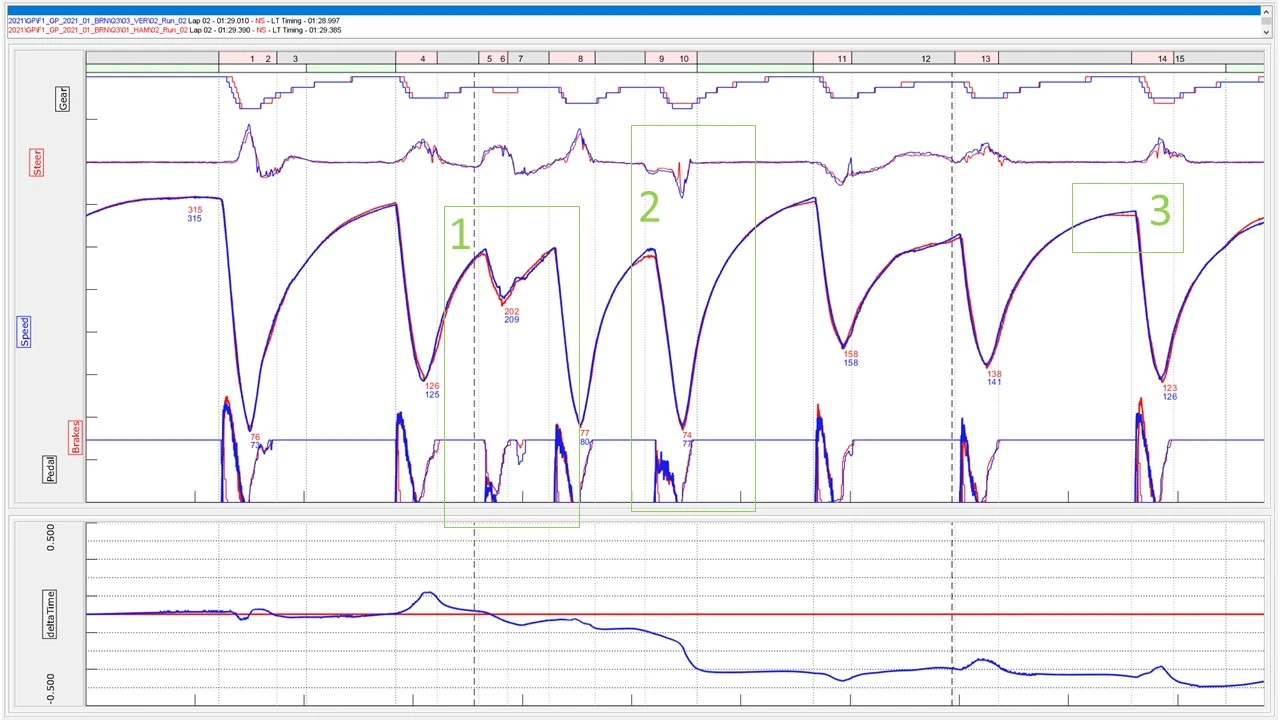
The graph above shows, from top to bottom, a comparison for Verstappen (blue) and Hamilton (red) for gear, steering input, speed, throttle/brake and delta time across their final runs in Q3.
Several things stand out, as highlighted by the green boxes.
1. As seen in Practice, Verstappen once again carries more speed into Turn 5, but has to compromise in Turn 7 by lifting more. However, overall Verstappen gained time relative to Hamilton in this section.
2. Hamilton makes a mistake into Turn 10 which costs him approximately 0.3s to Verstappen. The balance of the Mercedes seems to be towards oversteer, as represented by Hamilton making several steering corrections.
3. Hamilton is using a different energy deployment strategy to Verstappen, stopping the deployment much earlier on the straights.
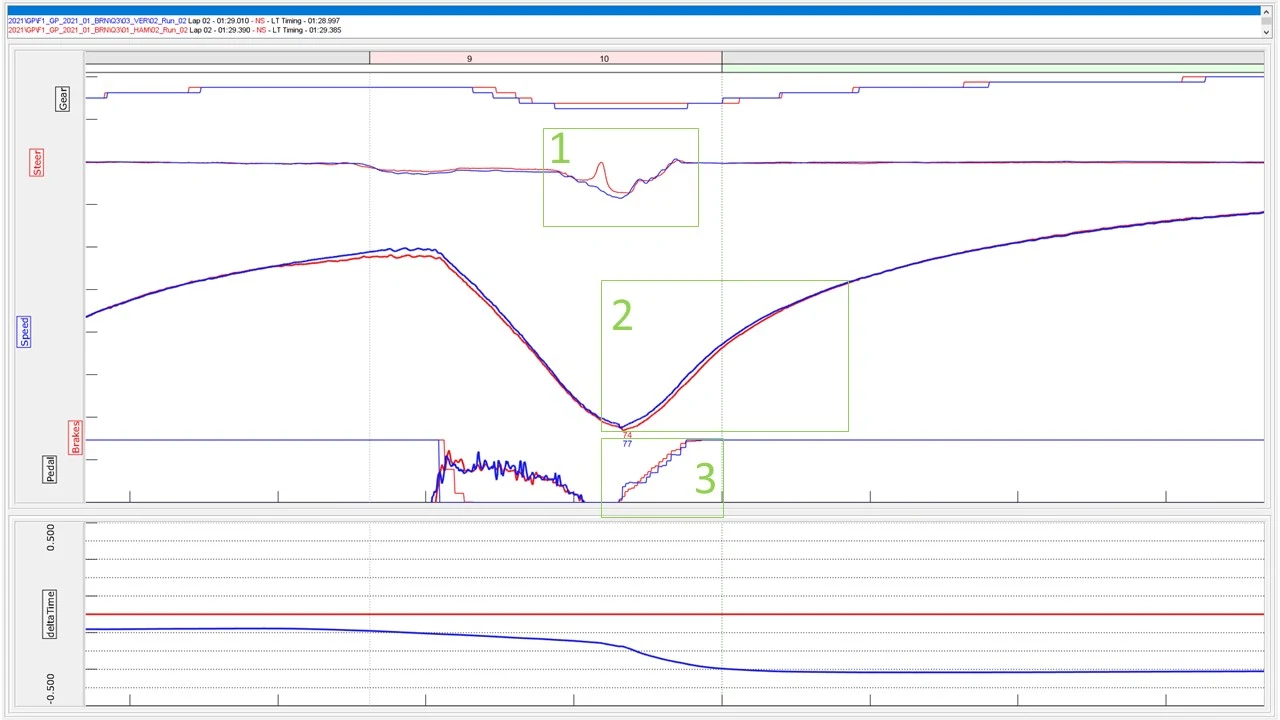
Looking more closely at Hamilton’s Turn 10 mistake, which cost him around 0.3s to Verstappen, we can see via the graph above:
1. That Hamilton suffers from oversteer and has to make a large correction on the steering.
2. This one small mistake means Hamilton is much slower out of the corner and loses a lot of time as a consequence.
3. The correction means Hamilton has to be more cautious on throttle, while Verstappen is able to apply throttle earlier and get better acceleration off the corner.
RACE – Hamilton and Mercedes turn tables on Verstappen and Red Bull
The chart below shows Hamilton’s gap to Verstappen across the race, the red bars being his deficit and the green his lead.
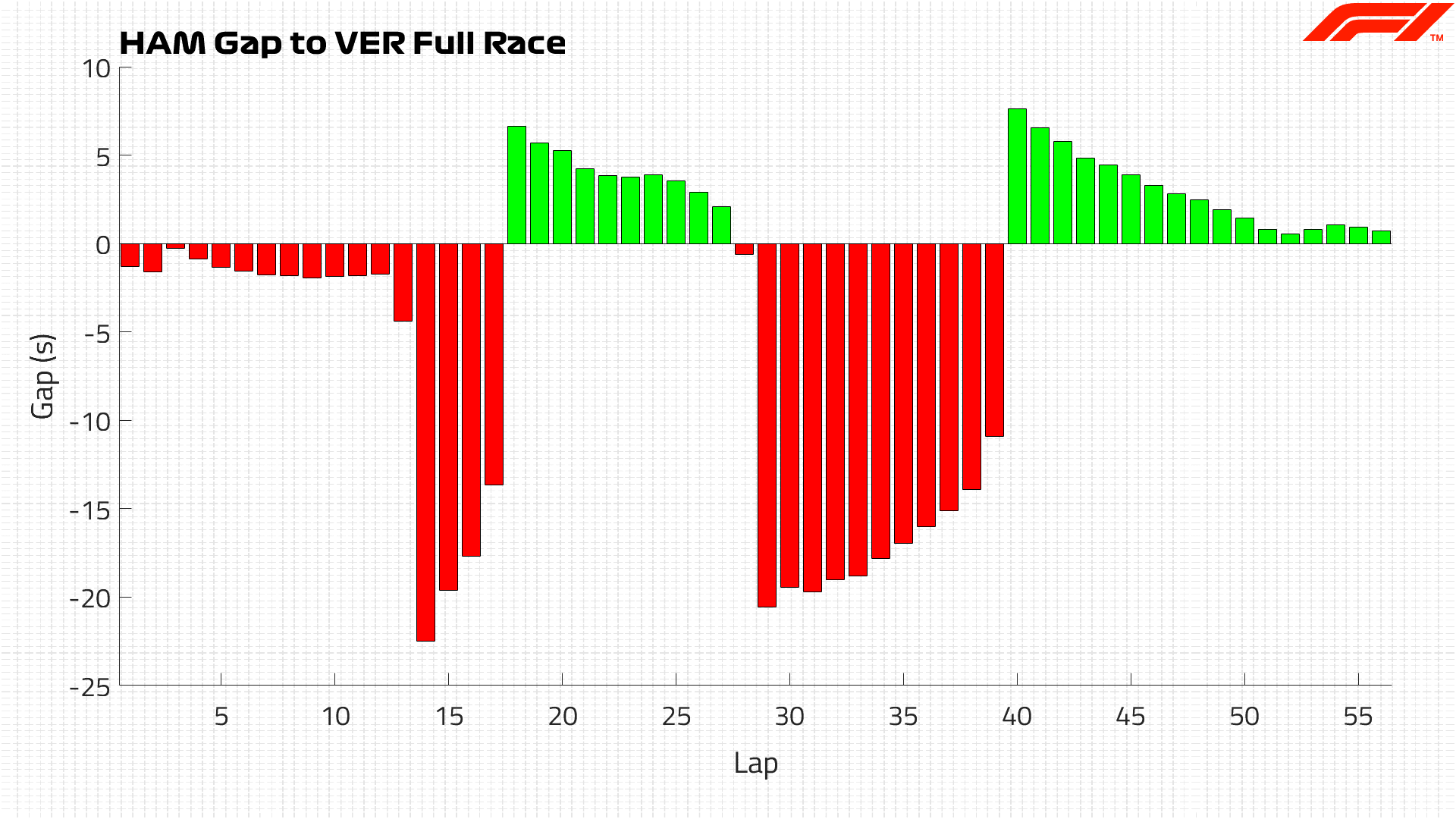
With Verstappen leading away from pole position at the start and maintaining a solid gap, Mercedes' hopes for victory rested on an aggressive tyre strategy and Hamilton’s ability to make the most of track position – even if it would mean a longer stint than Verstappen in the latter stages of the race.
The first step in that plan was pitting the seven-time champion early, on lap 13, in an attempt to undercut Verstappen, knowing they’d need to make around 1.7s for it to be successful.
The estimated time lost due to a pit stop in Bahrain is 23s, but by the end of lap 14, Verstappen only had a 22.5s advantage over Hamilton. In reality, Verstappen lost 22.88s on his first stop, so would have came out around 0.4s behind Hamilton had he stopped on lap 14.
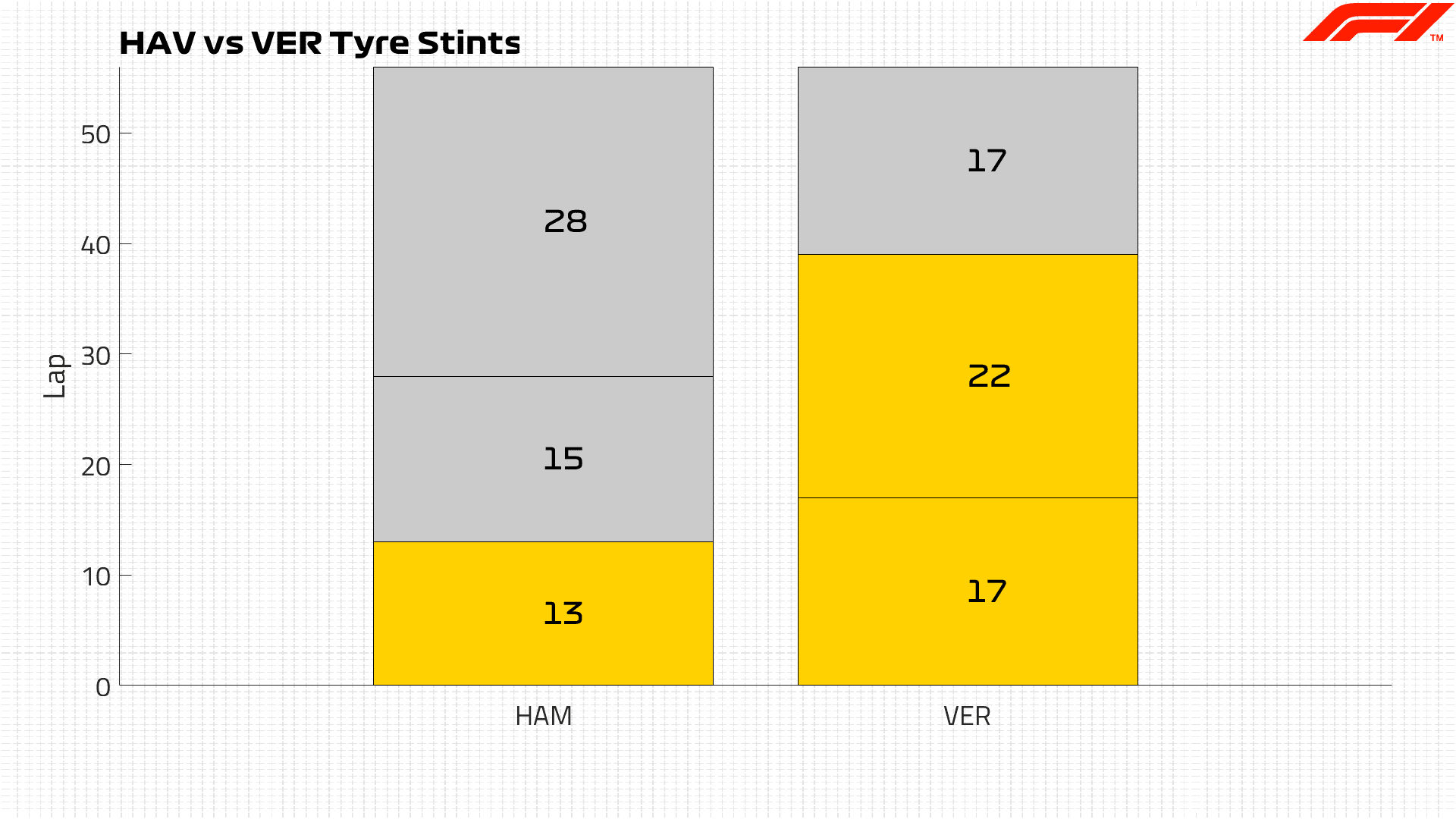
As a result of not being able to cover the undercut, Red Bull had to extend their stints (see above) with the hope of catching Hamilton during the final phase of the race using fresher tyres.
After his final stop, Verstappen was able to reduce a 7.6s deficit to 0.8s in an 11-lap period, averaging 0.62s/lap quicker than Hamilton.
Final stint comparison
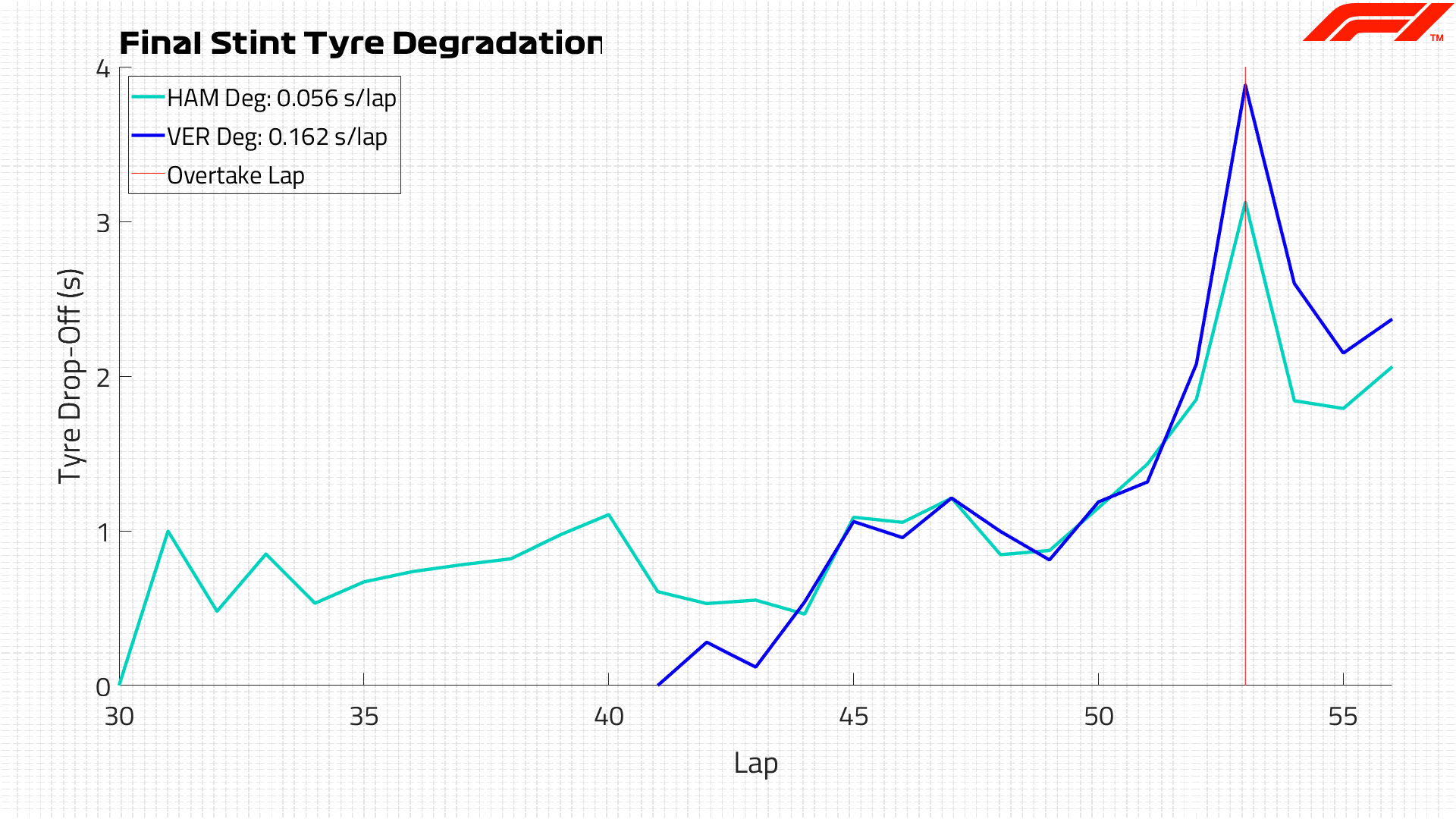
With Hamilton making his second stop 11 laps earlier than Verstappen, tyre management was key to retaining the lead. His last stint on the hard tyre was 28 laps long, with Lance Stroll being the only other driver in the Top 10 to complete this many laps.
Interestingly, Hamilton’s degradation averaged 0.056 s/lap, whereas Stroll’s tyres degraded almost three times quicker at 0.141 s/lap, resulting in him being overtaken by Tsunoda on the last lap, losing P9.
As Verstappen was on fresher tyres, needing only to complete 17 laps on his final stint, he was able to push the tyre more, degrading by an average of 0.162 s/lap.
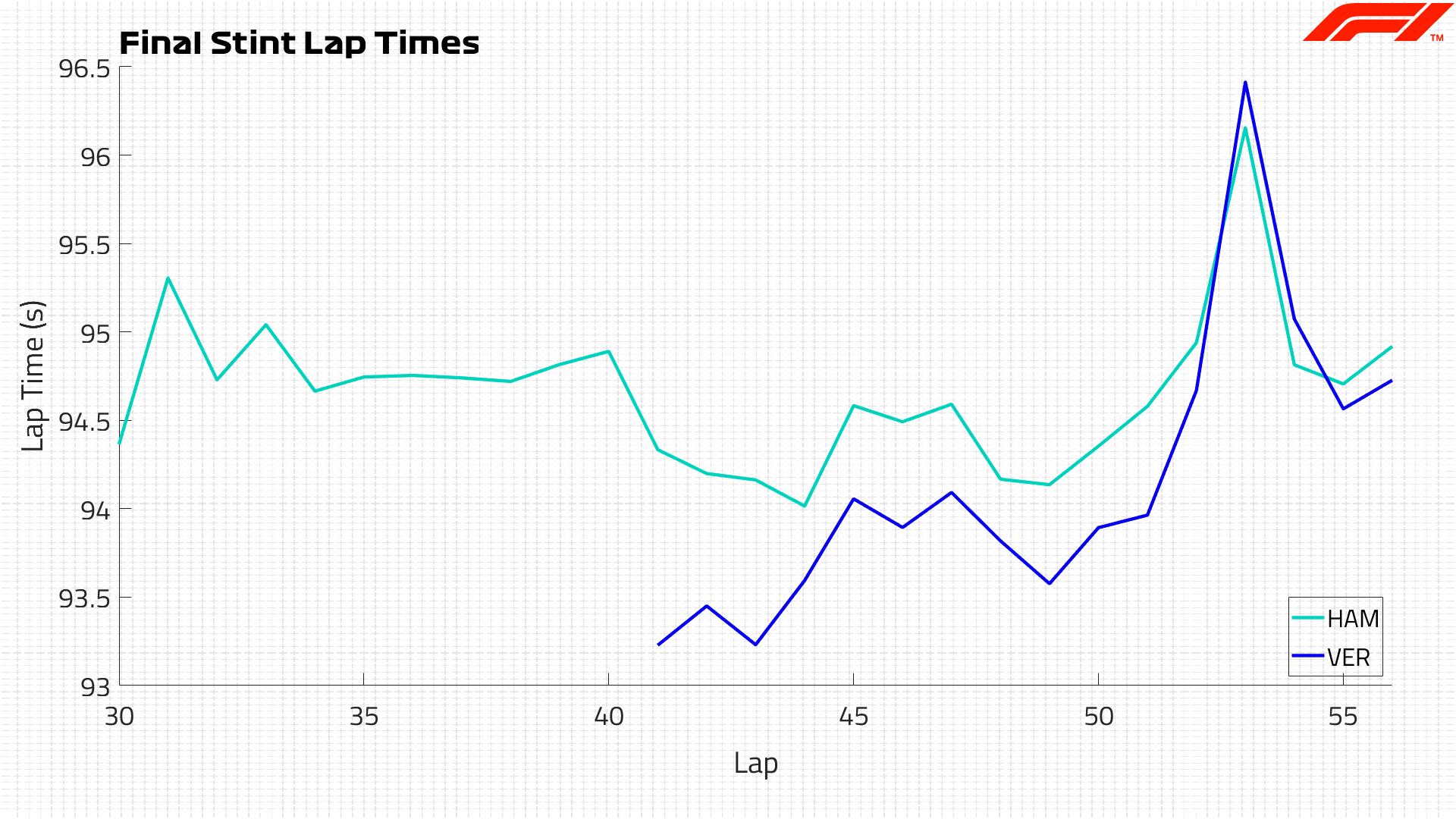
Crucially, on lap 53 - the lap that Verstappen passed Hamilton - both drivers were roughly equal on overall tyre degradation. After giving the position back for exceeding track limits, Verstappen was now at a disadvantage, having used more of his tyre’s performance than Hamilton at this stage.
This would explain why Verstappen was unable to mount another serious challenge, the Dutchman saying afterwards “I just didn’t have the tyres anymore to attack”.
During the final three laps, the pace difference between the drivers converged, with Verstappen having an average lap time just 0.03s quicker than Hamilton.
Three key laps
Lap 43 – Closing in
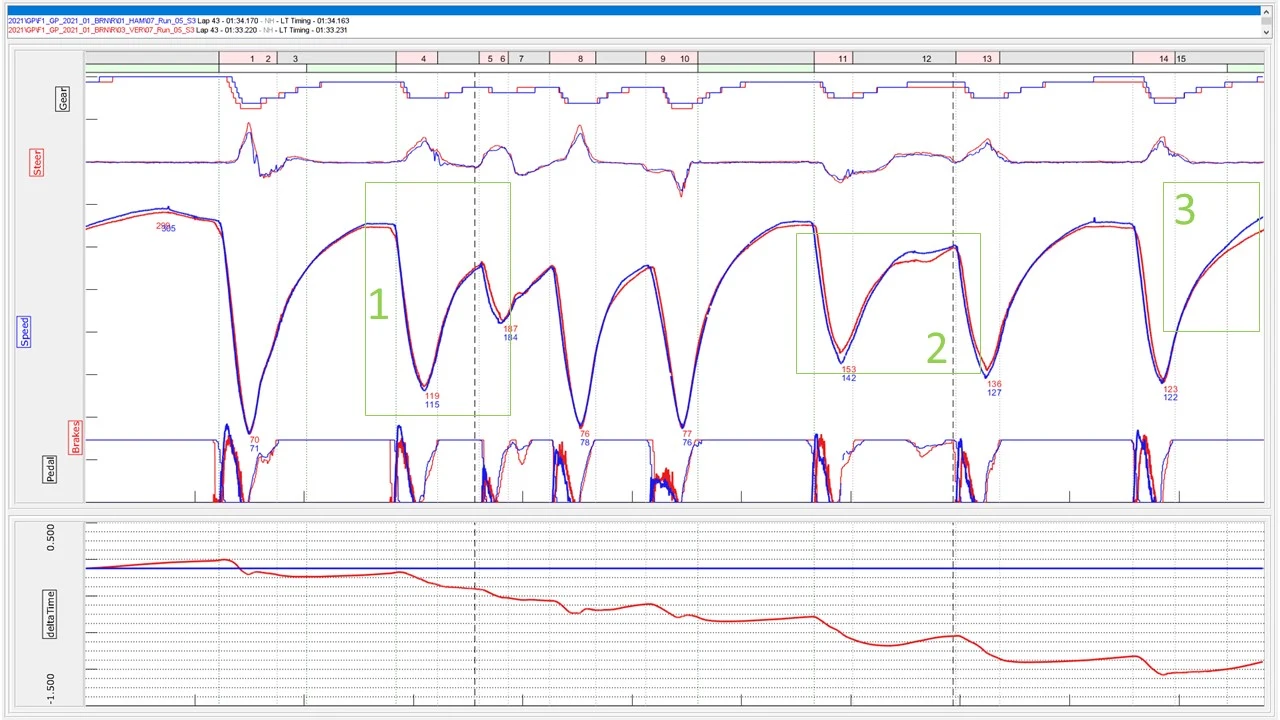
Here we compare Lap 43, where Verstappen is chasing down Hamilton on his newer tyres. Once again the graph shows, from top to bottom, gear, steering input, speed, throttle/brake and delta time – but this time Verstappen is the red trace and Hamilton the blue.
It is clear that Verstappen is able to make large gains through the medium and high-speed corners by carrying more apex speed than Hamilton. Hamilton is marginally quicker on the straights, but not by enough to offset the time made by Verstappen in the corners.
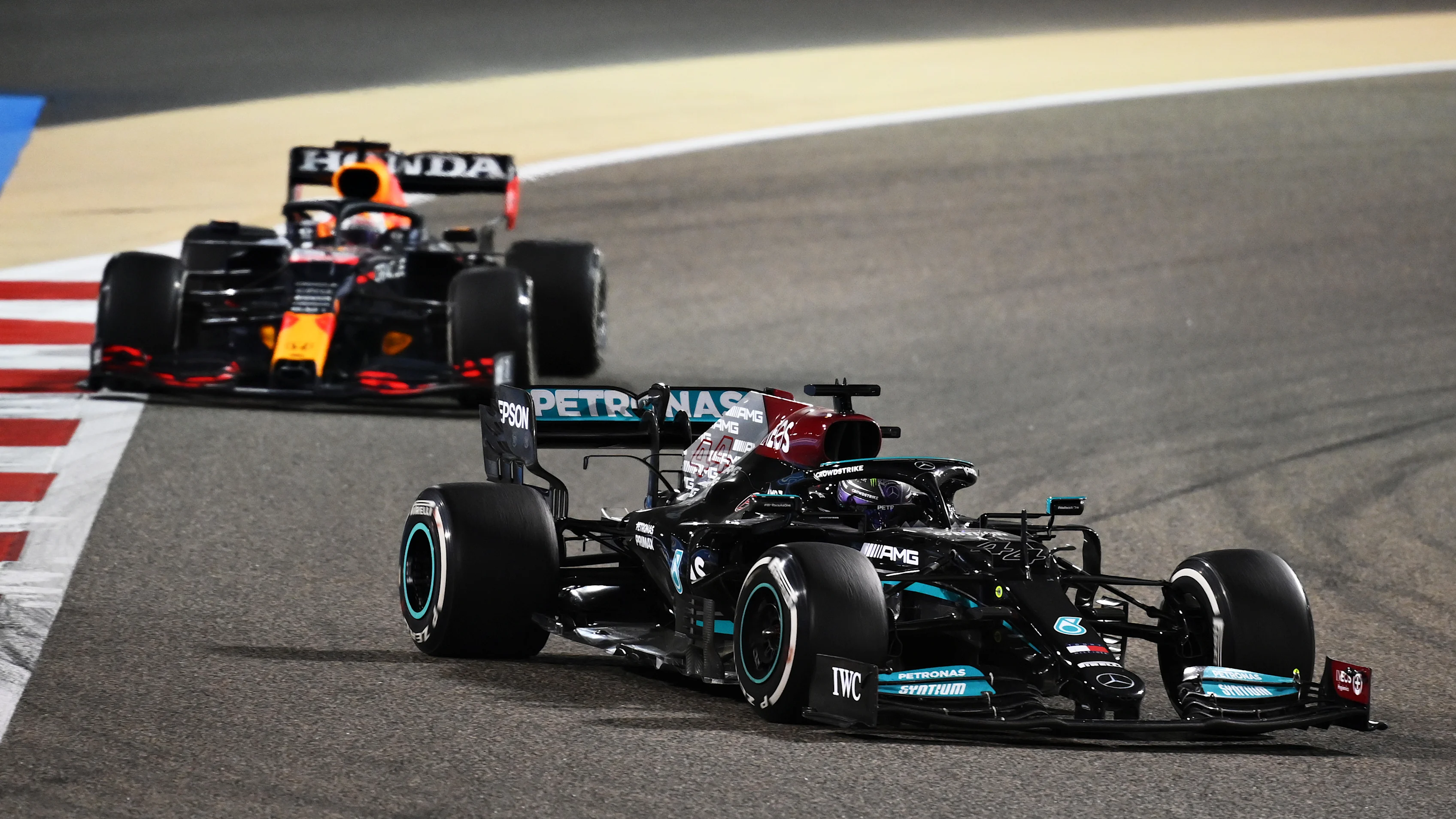
Once again, by looking at the sections highlighted in green we can make some observations.
1. Both drivers are equal up to Turn 4, but Verstappen, with his tyre advantage, carries more speed into the corner and gains several tenths going into the high-speed section.
2. Verstappen carries 11 km/h more apex speed than Hamilton through Turn 11, but needs to lift more at Turn 12 as a result.
3. HAM gets a tow from Russell as he laps him, boosting his overall speed and highlighting the role lapped traffic can have in a battle like this.
Lap 53 – The attempted pass
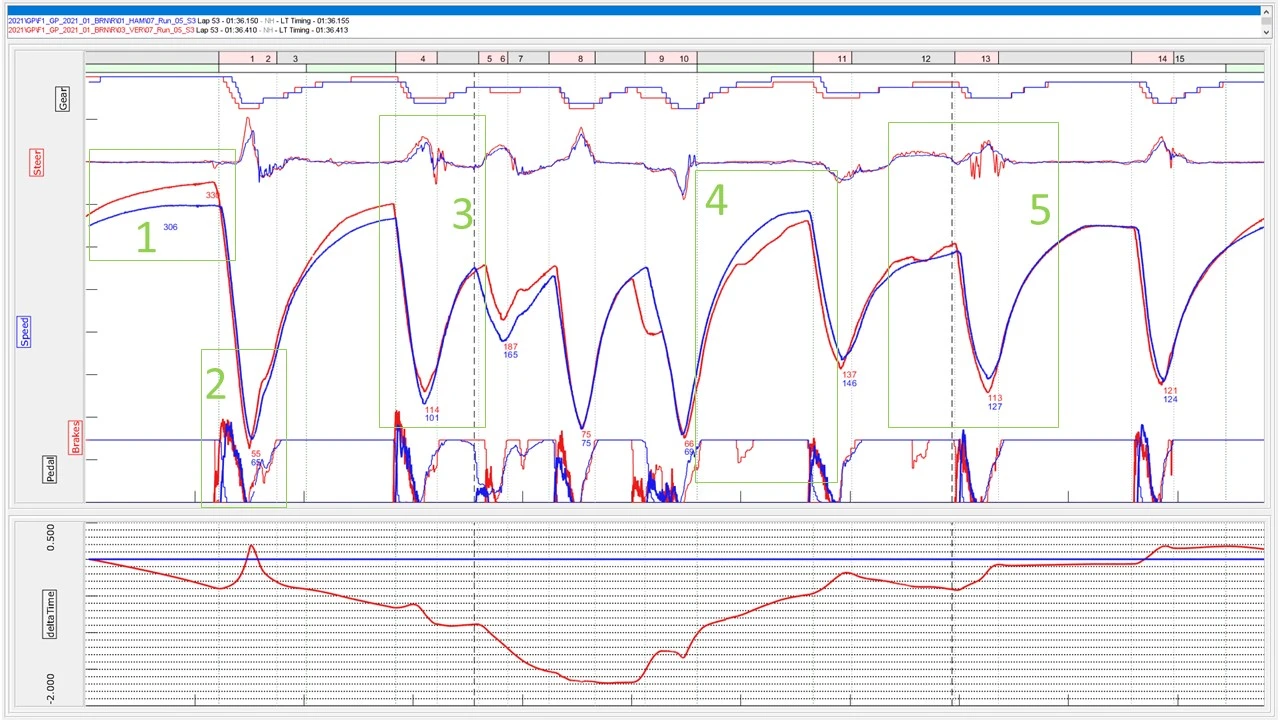
Having closed right in, the moment to pass arrived on Lap 53 as the duo raced down to Turn 4.
As highlighted by the green boxes:
1. Verstappen arrives at Turn 1 with a 30 km/h speed advantage thanks to opening his DRS and getting a tow from Hamilton.
2. Verstappen runs deep into Turn 1 to try and maximise his exit speed onto the straight.
3. Verstappen passes Hamilton around the outside, but has to make a large correction for oversteer as he runs off the track. He carried 7km/h more speed at the apex than his previous lap.
4. The moment Verstappen gives the position back to Hamilton.
5. Verstappen struggles to follow Hamilton through Turns 12 and 13, having to make more oversteer corrections as he struggles for grip and traction.
Lap 56 - The final lap
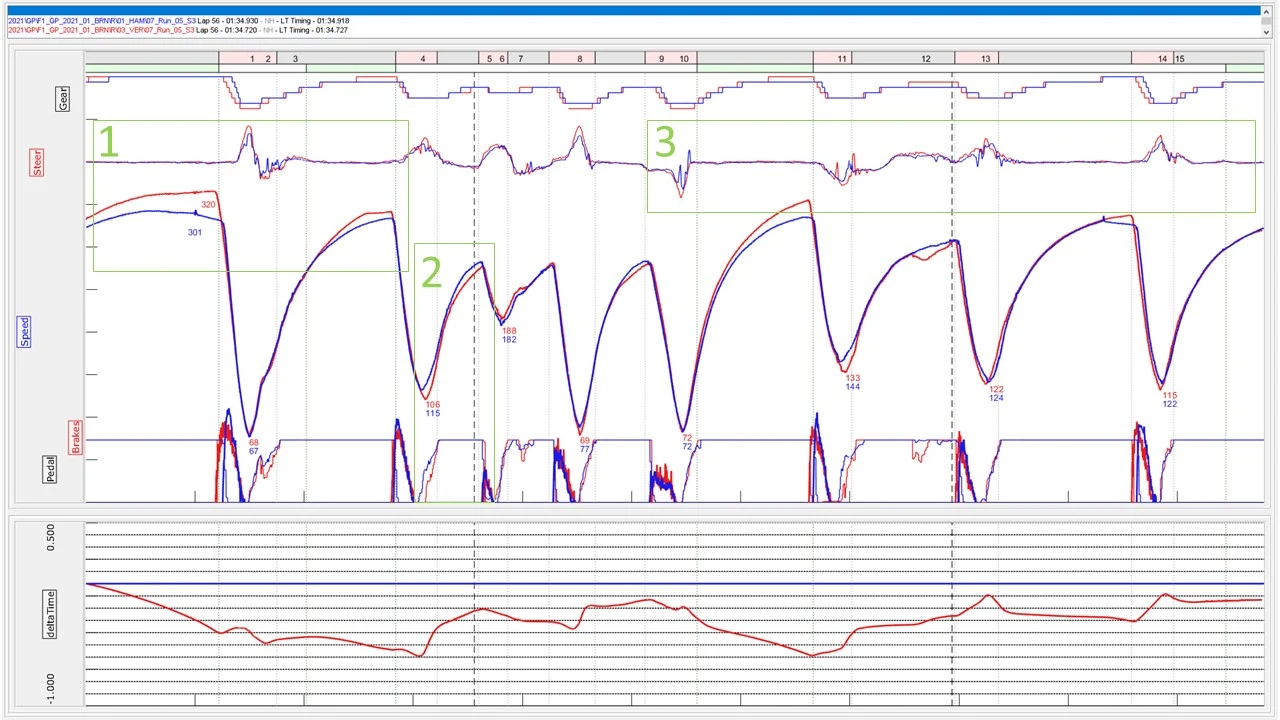
On the final lap, Verstappen gains 0.6s on HAM before Turn 4, but then loses time through the high and medium-speed corners. A combination of the turbulent wake coming from Hamilton’s car and degraded tyres prevents Verstappen from being able to attempt a final-lap overtake.
1. Verstappen gains on Hamilton on the straight, aided by a tow and DRS. Before Turn 4, Verstappen stops energy deployment early.
2. Verstappen struggles to get the power down out of Turn 4, losing several tenths to Hamilton.
3. Both drivers are now struggling for grip, demonstrated by multiple steering corrections. Hamilton made it across the line first – but by just 0.7s, the tightest of margins at the end of an epic contest.
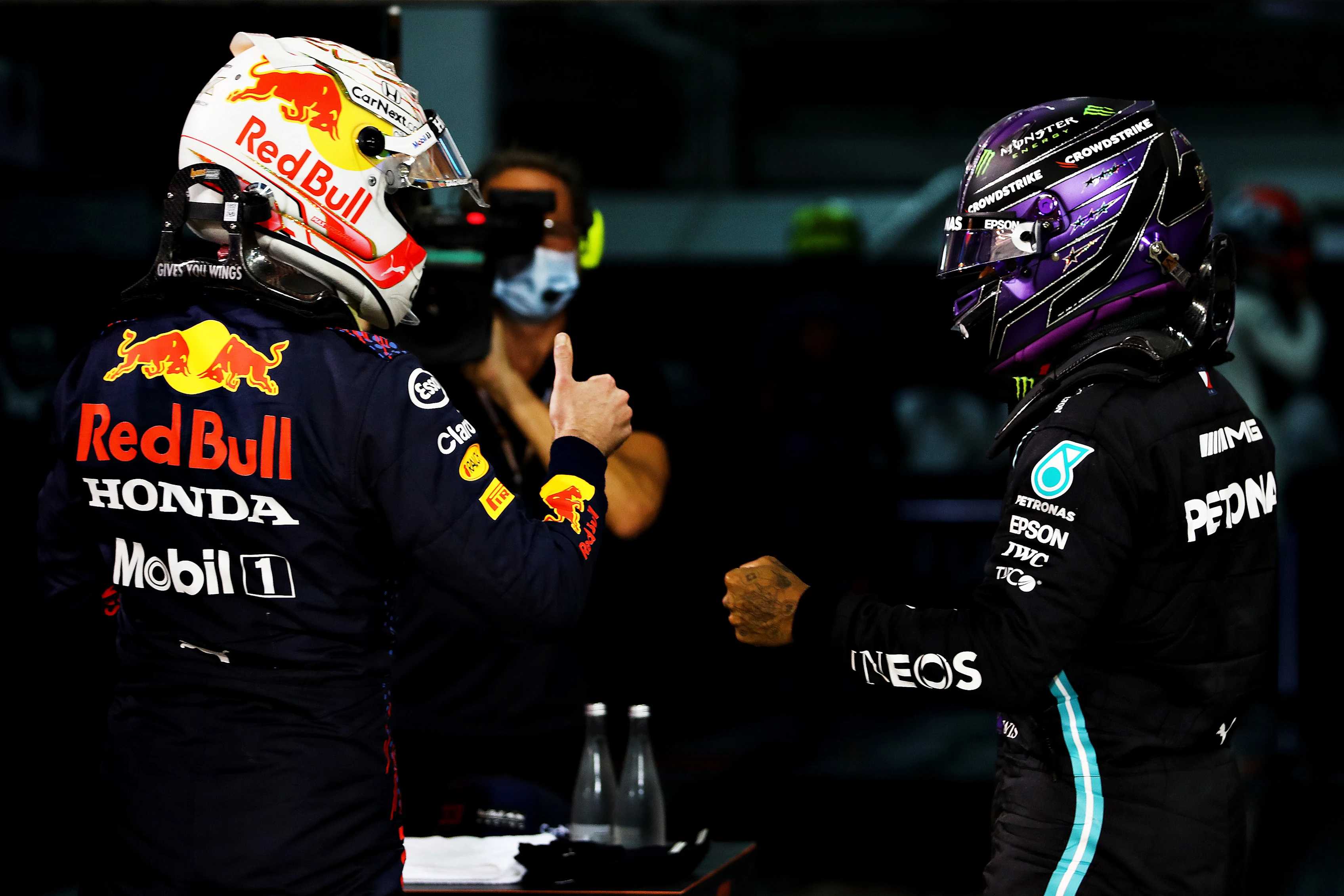
Next Up
Related Articles
 Our writers on the best drivers and stories from 2025
Our writers on the best drivers and stories from 2025.webp) Winners & Losers5 Winners and 5 Losers from the 2025 season
Winners & Losers5 Winners and 5 Losers from the 2025 season Watch as the F1 grid does Secret Santa for 2025
Watch as the F1 grid does Secret Santa for 2025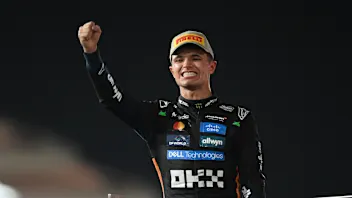 The elite group Norris joins as McLaren World Champion
The elite group Norris joins as McLaren World Champion.webp) End Of Year Reports 2025Aston Martin’s best and worst moments from 2025
End Of Year Reports 2025Aston Martin’s best and worst moments from 2025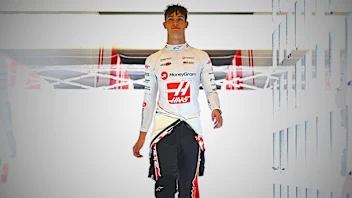 ExclusiveHow Bearman went from super-sub to star rookie in 2025
ExclusiveHow Bearman went from super-sub to star rookie in 2025
